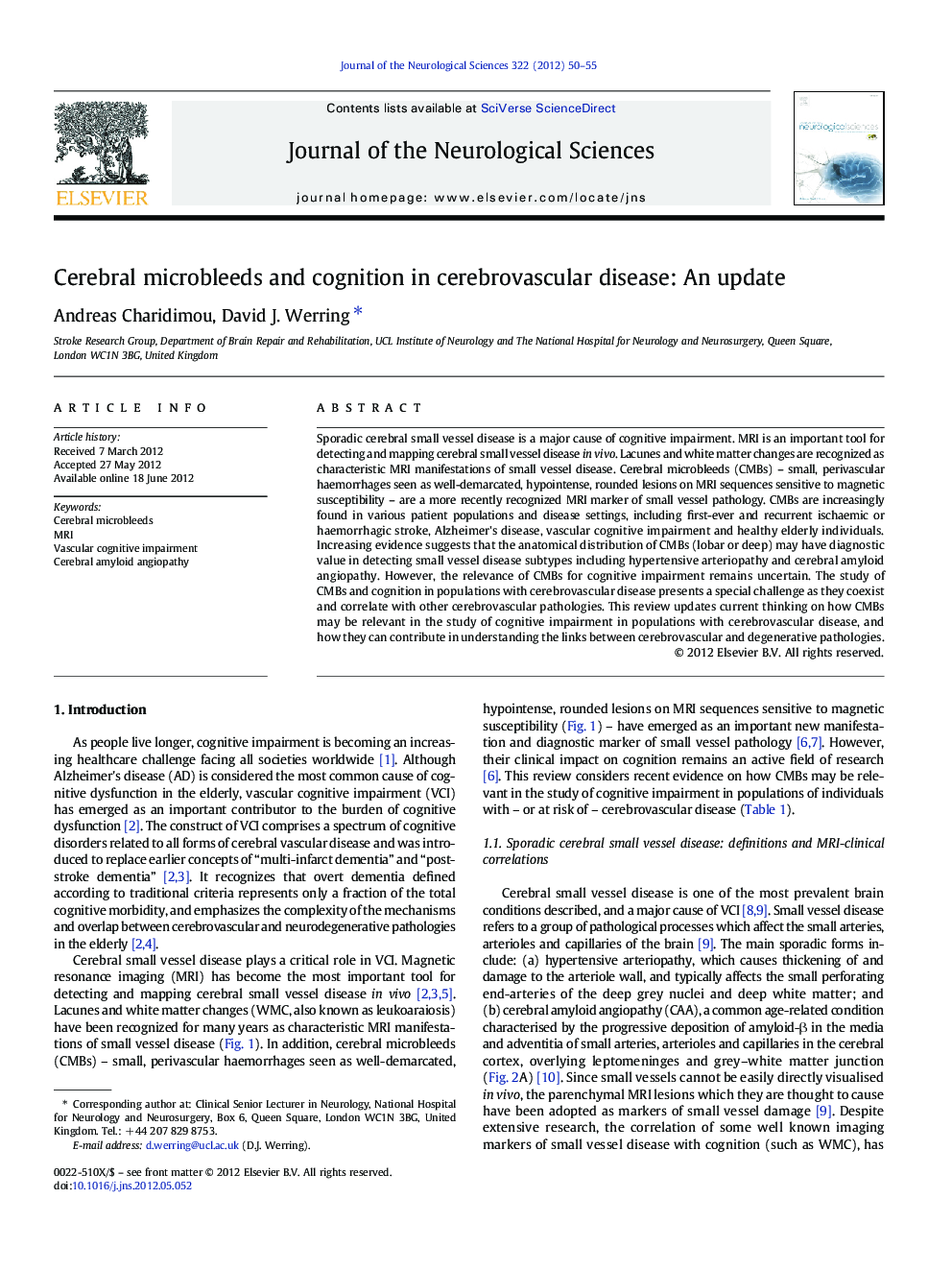| Article ID | Journal | Published Year | Pages | File Type |
|---|---|---|---|---|
| 8279951 | Journal of the Neurological Sciences | 2012 | 6 Pages |
Abstract
Sporadic cerebral small vessel disease is a major cause of cognitive impairment. MRI is an important tool for detecting and mapping cerebral small vessel disease in vivo. Lacunes and white matter changes are recognized as characteristic MRI manifestations of small vessel disease. Cerebral microbleeds (CMBs) - small, perivascular haemorrhages seen as well-demarcated, hypointense, rounded lesions on MRI sequences sensitive to magnetic susceptibility - are a more recently recognized MRI marker of small vessel pathology. CMBs are increasingly found in various patient populations and disease settings, including first-ever and recurrent ischaemic or haemorrhagic stroke, Alzheimer's disease, vascular cognitive impairment and healthy elderly individuals. Increasing evidence suggests that the anatomical distribution of CMBs (lobar or deep) may have diagnostic value in detecting small vessel disease subtypes including hypertensive arteriopathy and cerebral amyloid angiopathy. However, the relevance of CMBs for cognitive impairment remains uncertain. The study of CMBs and cognition in populations with cerebrovascular disease presents a special challenge as they coexist and correlate with other cerebrovascular pathologies. This review updates current thinking on how CMBs may be relevant in the study of cognitive impairment in populations with cerebrovascular disease, and how they can contribute in understanding the links between cerebrovascular and degenerative pathologies.
Related Topics
Life Sciences
Biochemistry, Genetics and Molecular Biology
Ageing
Authors
Andreas Charidimou, David J. Werring,
